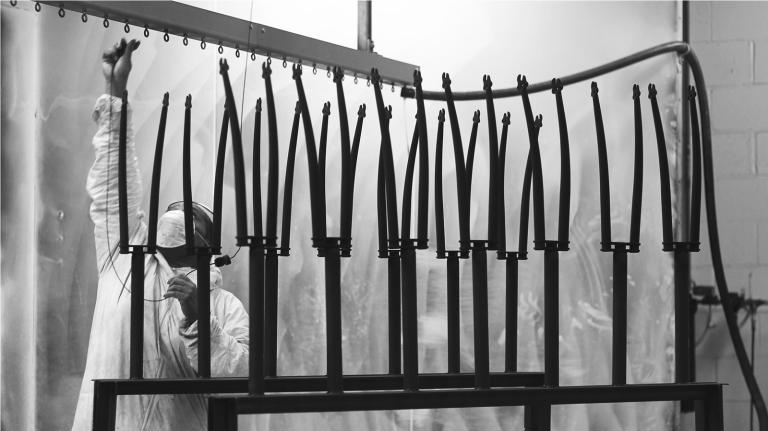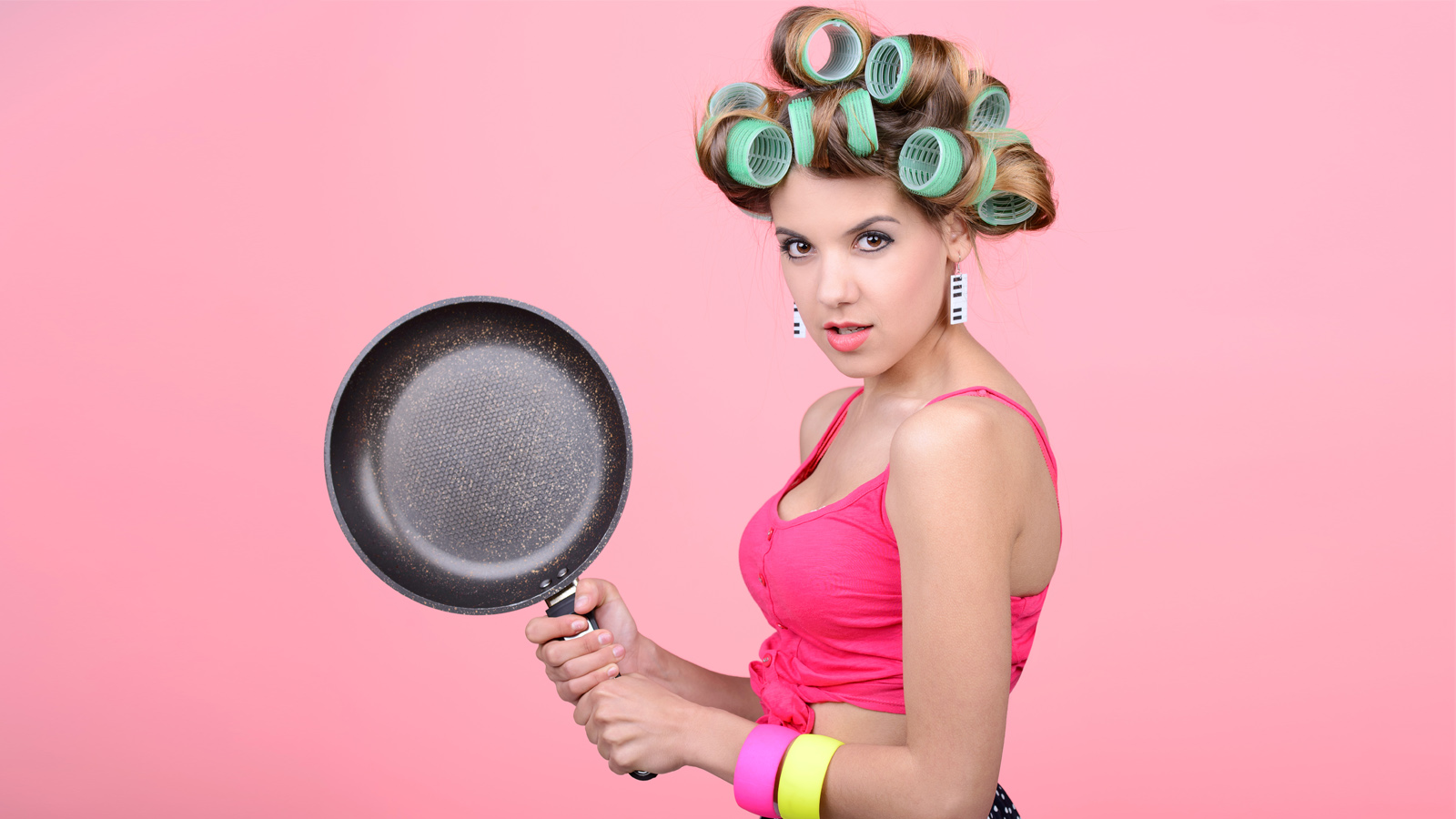Q. Hello! I am moving and will begin furnishing an apartment, which includes an entire kitchen. What do you suggest for a cookware set? Stainless steel? Aluminum? Nonstick? I have heard horror stories about Teflon…
Tricia
Washington, D.C.
A. Dearest Tricia,
I believe I’ve heard a similar horror story. Is this the one where the nonstick pans were calling from inside the house the whole time? (Shiver.)
Luckily, there are several non-terrifying options to fulfill all your culinary needs. Which is terrific, because cooking at home is one of the best ways to eat healthy, incorporate more fresh, local food into your diet, bond with family, de-stress after work, and save cash to boot. It’s enough to send me running to the recipe book right now.
I try to live by two overarching guidelines to choosing cookware (or anything for the home, really). One, buy only what you need. If a few saucepans and a skillet will do, then don’t get seduced into buying a 40-piece matching set. Two, select durable, long-lasting items whenever possible to minimize replacement costs (both in dollars and resources required to make new ones). That’s it! So what does that mean for your kitchen cabinets?
Let’s start with that Teflon: The name-brand nonstick coating is polytetrafluoroethylene (PTFE), which is produced with the help of another chemical called Perfluorooctanoic acid (PFOA) or C8. PFOA is the truly nasty stuff – it accumulates in the environment and our bodies and has been linked to cancer in both lab animals and people. But, importantly, PFOA isn’t present in finished Teflon cookware in any significant amounts, and the EPA’s stance is that we don’t need to worry about using treated pots and pans.
Here comes another “but”: But we do need to worry about overheating a nonstick pan, because temps above about 500 degrees can cause it to release dangerous fumes that can kill nearby pet birds and give their owners a flu-like condition called polymer fume fever. Ick. (Incidentally, ingesting small bits of the flaking coating is okay, because the solid stuff is inert.) There are also quite a few “greener” nonstick items on the market that use something other than PFOA in their coatings. These sound appealing, but the jury is still out on their safety and lifespan.
Leaving all that aside, though, nonstick cookware violates Guideline Two – it only lasts a few years before the coating wears away. These pieces are essentially semi-disposable, and as such we should avoid them. In their place, may I suggest cast iron, stainless steel, or high-temperature glassware?
Cast iron is one of my favorite materials because it cooks evenly, retains heat, can move effortlessly from the stovetop to the oven to the campfire, and has a certain pioneer flair. Oh, and it really can last for generations, making your initial investment (around 40 bucks for a new skillet) one of the greatest-value purchases of your life. You may even find one at a secondhand or antique store for much less. Cast iron does demand diligent seasoning, but the process isn’t hard and will make the pan naturally nonstick as it ages.
Stainless steel (often with an aluminum or copper core) is another winner: It’s great for browning food, very durable, easy to clean, and usually affordable. Should you ever need to dispose of the pan, it may be recyclable near you; and you can even find new pieces made partly with recycled steel. For the oven, high-temperature glassware (often under the brand name Pyrex) is another good choice, as is ceramic and enamel.
Have you left for your shopping spree, Tricia, or do you have time for a few more thoughts? Copper cookware is highly prized for its excellent conductivity (it heats up and cools down quickly), but copper mining is a dirty business and unlined pieces might make you sick. Anodized aluminum also conducts heat very well and lasts a long time, but refining the stuff is quite energy-intensive. All cookware will have some degree of impact in production, of course, which is why we try for the longest-lasting pots and pans we can. Remember, buy once, cook a thousand times – and if that isn’t an ancient bit of wisdom, it should be.
Chefily,
Umbra




